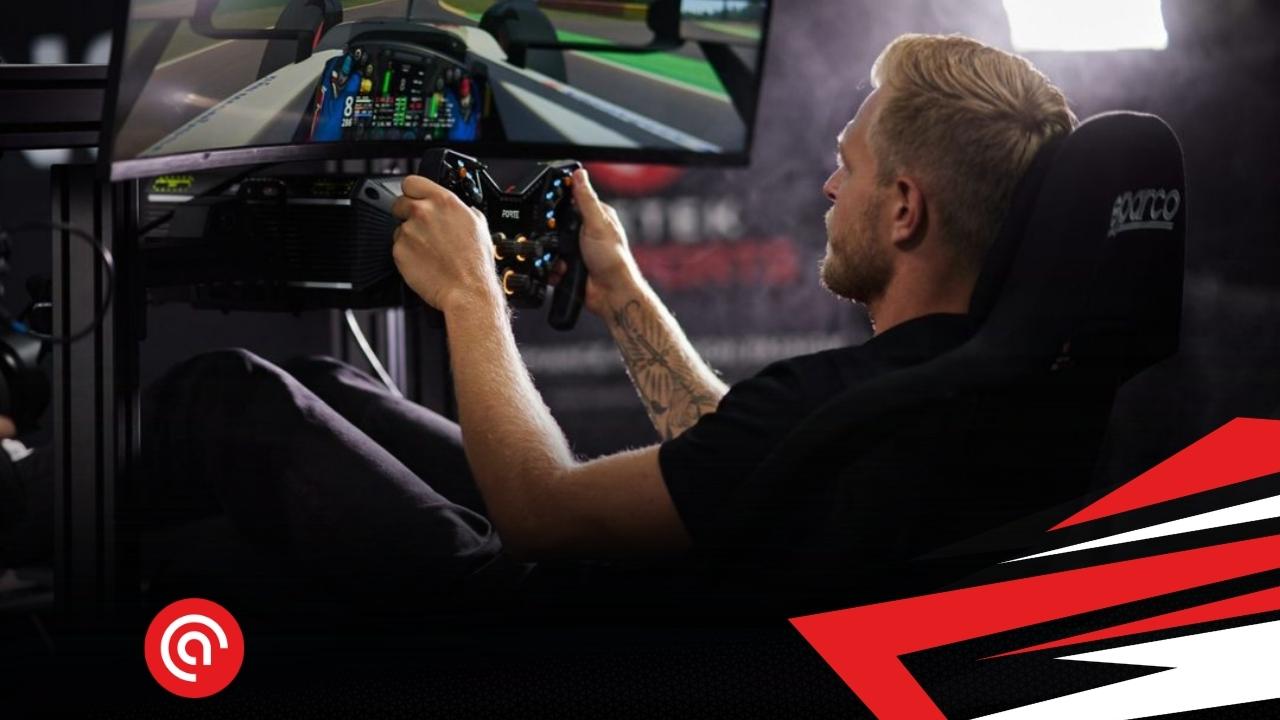
Sim Racing Seating Position: A Complete Guide
Sim racing has gained immense popularity as a thrilling and immersive way to experience the world of motorsports from the comfort of your own home. However, to truly enhance your virtual racing experience and maximize your performance, there is one crucial factor that often goes overlooked: The correct seating position.
The importance of achieving the right seating position in sim racing cannot be underestimated. It not only impacts your comfort and endurance during long racing sessions but also significantly affects your control, precision, immersion, safety, and consistency.
In this guide, we will explore why the correct seating position is vital in sim racing and how it can elevate your virtual racing experience to new heights.
The Importance of the Sim Racing Seating Position
When it comes to sim racing, the seating position holds tremendous importance in enhancing your overall sim racing experience.
Immersion and Realism
A proper seating position can greatly enhance the immersion and realism of your sim racing experience. By positioning yourself correctly, you can mimic the posture and movements of a real race car driver. This includes sitting upright with a slight forward lean, similar to the driving position in a real car.
When you achieve a realistic seating position, it helps you feel more connected to the virtual environment, improving the overall immersion of the simulation.
Ergonomics
Ergonomics is the science of designing products and environments to optimize human well-being and performance. In sim racing, ergonomics play a crucial role in ensuring your comfort and minimizing the risk of physical strain or injury.
A well-designed sim racing seat should offer adjustability options, allowing you to fine-tune the height, angle, and distance from the steering wheel and pedals. Proper ergonomics promote a natural alignment of your body, reducing the likelihood of discomfort, fatigue, and musculoskeletal issues during long gaming sessions.
Comfort
Comfort is essential for an enjoyable sim racing experience. It involves factors such as seat padding, lumbar support, and the overall fit of the seat.
A comfortable seating position allows you to focus on the race without distractions or discomfort. Adequate padding and support in the seat help to distribute your weight evenly, reducing pressure points and preventing soreness. Adjustable lumbar support is also important for maintaining proper spinal alignment and preventing lower back pain.
How to Find the Ideal Sim Racing Seat Position
When it comes to finding the right sim racing seat position, there are several factors that should be considered.
Distance from the screen
Positioning yourself at an appropriate distance from the screen is crucial for clear visibility and avoiding eye strain. A general guideline is to sit approximately 2 to 3 feet away from the screen, but it may vary depending on the screen size and personal preference. You should be able to see the entire screen without straining your eyes and have a wide field of view for a realistic racing experience.
Angle of the backrest
The angle of the backrest determines your posture and comfort level during long sim racing sessions. It’s recommended to adjust the backrest to a position where your spine maintains a natural curve. Sitting too upright or reclined can lead to discomfort or back pain. Experiment with different angles to find the one that provides good support while allowing you to reach the controls easily.
Distance from the pedals
The distance between your seat and the pedals is crucial for achieving proper leg positioning and efficient pedal control. When seated, your knees should be slightly bent and at a comfortable angle. Ensure that your feet can rest on the pedals without straining, and you can fully depress the pedals without lifting your heels off the floor. Adjust the seat forward or backward to find the optimal distance that allows for smooth and precise pedal inputs.
Take a look at our different sim racing pedals.
Angle of the pedal plate
Many sim racing setups have adjustable pedal plates that can be angled to suit individual preferences. The angle of the pedal plate should allow your feet to rest naturally and comfortably on the pedals. Typically, a slight downward tilt of the pedal plate helps prevent your feet from slipping off during intense racing maneuvers. Experiment with different angles to find the one that feels most natural and secure for your feet.
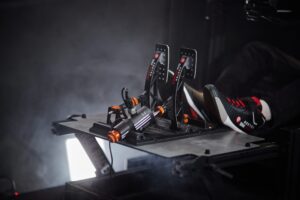
Mastering Control and Precision with the Correct Seating Position
Stability
A correct seating position allows you to maintain a stable and balanced posture. This stability is essential for making precise steering inputs, throttle control, and braking. When your body is properly aligned and supported by the seat, you can minimize unwanted movements or shifts in your position, ensuring that your inputs are consistent and accurate.
Ergonomics
An optimal seating position ensures that your body is aligned with the virtual steering wheel, pedals, and other controls. This alignment allows for a more natural and ergonomic range of motion, reducing strain on your muscles and joints. When your arms, hands, and feet are comfortably positioned, you can execute precise movements with less effort, enhancing control and reducing the risk of fatigue.
Feedback Sensitivity
A correct seating position enhances your ability to perceive and interpret feedback from the virtual car. When seated properly, you can better feel the subtle vibrations, forces, and weight shifts simulated by the game. This improved feedback sensitivity allows you to make quicker and more accurate adjustments to your driving technique, resulting in better control over the vehicle’s behavior.
Visual Perspective
The correct seating position also affects your visual perspective in sim racing. Being at the right distance from the screen and having the correct angle can enhance your field of view and depth perception. This enables you to judge distances, corners, and other elements of the track more accurately, allowing for precise positioning and line selection.
Reaction Time
A proper seating position can positively impact your reaction time. By being comfortably positioned, you can anticipate and respond to virtual hazards or sudden changes on the track more rapidly. This increased reaction time enables you to make split-second decisions, avoid collisions, and maintain control over your vehicle.
How to Optimize Sim Racing Wheel Position, Height & Angle
Optimizing the correct sim racing wheel height, angle, and position is essential for achieving a comfortable and ergonomic driving experience. Here’s a step-by-step guide on how to optimize these factors and what to be aware of:
Wheel Height
- Start by adjusting the height of your sim racing wheel to ensure your arms are comfortably positioned. The goal is to have your arms at a slightly bent position, resting comfortably on the wheel.
- Sit in your sim racing seat and adjust the wheel height accordingly. Most sim racing wheels come with height-adjustable mounts or stands that can be modified to suit your preference.
- Be aware of the height in relation to your seating position. Ensure that your arms are not fully extended or raised too high, as this can cause discomfort and strain during long gaming sessions.
Wheel Angle
- The angle of the sim racing wheel should allow for a natural and comfortable grip. Start by aligning the wheel horizontally, parallel to the ground, as a baseline.
- Sit in your sim racing seat and hold the wheel as if you were driving. Adjust the angle of the wheel to find a position that allows your hands to rest comfortably on the wheel without excessive strain on your wrists or arms.
- Be mindful of the angle’s impact on your line of sight. Ensure that the wheel doesn’t obstruct your view of the screen or important game information.
Wheel Position
- The positioning of the sim racing wheel should be optimized to mimic the real-world driving experience as closely as possible. This involves placing the wheel at an appropriate distance from your body.
- Sit in your sim racing seat and adjust the wheel’s position, bringing it closer or pushing it away to find the most comfortable and natural reach for your arms.
- Be aware of the distance between the wheel and your body. The ideal position is typically where your wrists rest on the top of the wheel without having to strain or stretch to reach the controls.
Check out our sim racing steering wheels.
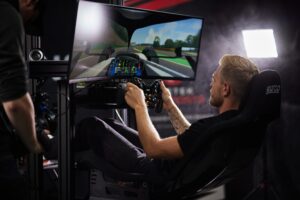
How to find the optimal GT style seating position
Getting the right seating position in sim racing is crucial for both comfort and control, especially when driving GT cars, where the seating position is more upright compared to formula cars. Adjusting your setup properly will help you drive more consistently, reduce fatigue, and improve precision during long races.
Adjust Your Seat
Start by positioning your seat upright, similar to a real GT race car. Your back should be well-supported, and your legs should be slightly bent when pressing the pedals. Avoid sitting too far back, as this can reduce control and reaction time.
Find the Right Distance to the Wheel
Your arms should have a slight bend when holding the wheel – not fully extended but not too close either. A good rule of thumb is to place your hands at the 9 and 3 o’clock positions and check if you can turn the wheel fully without overextending your arms.
Adjust the Wheel Height
The steering wheel should be positioned so that you can see your screen clearly while maintaining a comfortable grip. It should not be too low, causing strain, or too high, blocking your view.
Optimize Your Hand Position
In GT cars, the standard hand placement is 9 and 3 o’clock, allowing for better control and precision. Your thumbs should rest lightly on the wheel spokes, and your grip should be firm but relaxed to avoid unnecessary tension during long races.
By fine-tuning these adjustments, you can achieve a comfortable and efficient GT-style driving position, giving you better control, endurance, and immersion in every race.
Racing is all about precision – minor adjustments can have a major impact.
Common Mistakes to Avoid
Slouching or leaning back
Slouching or leaning back in your seat can lead to poor posture, reduced stability, and limited control over the steering wheel and pedals. It can also strain your neck and back over time. To avoid this mistake, sit upright with your back properly supported by the seat and maintain good posture throughout your gaming session.
Sitting too close or too far from the screen
Sitting too close to the screen can result in a distorted view, making it difficult to judge distances and corners accurately. On the other hand, sitting too far away can make it challenging to see details and react quickly. Ideally, you should position yourself at a distance where you can comfortably see the entire screen without straining your eyes. A common guideline is to sit at a distance of about one arm’s length away from the screen.
Incorrect height or angle of the seat
The height and angle of the seat are crucial for maintaining proper body alignment and reducing fatigue. If the seat is too high, your legs might be cramped, and your feet may not reach the pedals comfortably. If it’s too low, it can strain your knees and hinder your control. Additionally, the seat angle should be adjusted to provide optimal support and minimize stress on your back. Experiment with different heights and angles until you find the position that feels most comfortable and supportive.
So .. What is the Best Seating Position for Sim Racing?
The best seating position for sim racing can vary from person to person, as it depends on individual factors such as body proportions, preferences, and comfort. There is no one-size-fits-all solution.
But by looking at the areas mentioned in this guide, you have all the prerequisites to create the best Sim racing seating position for you.
You can also check our YouTube videos about sim racing ergonomics.









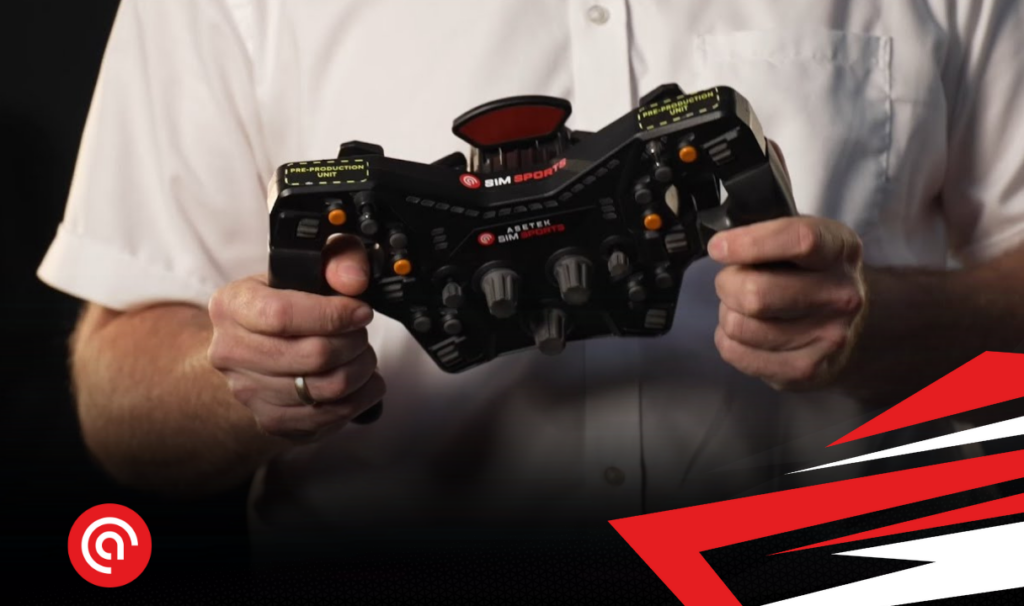
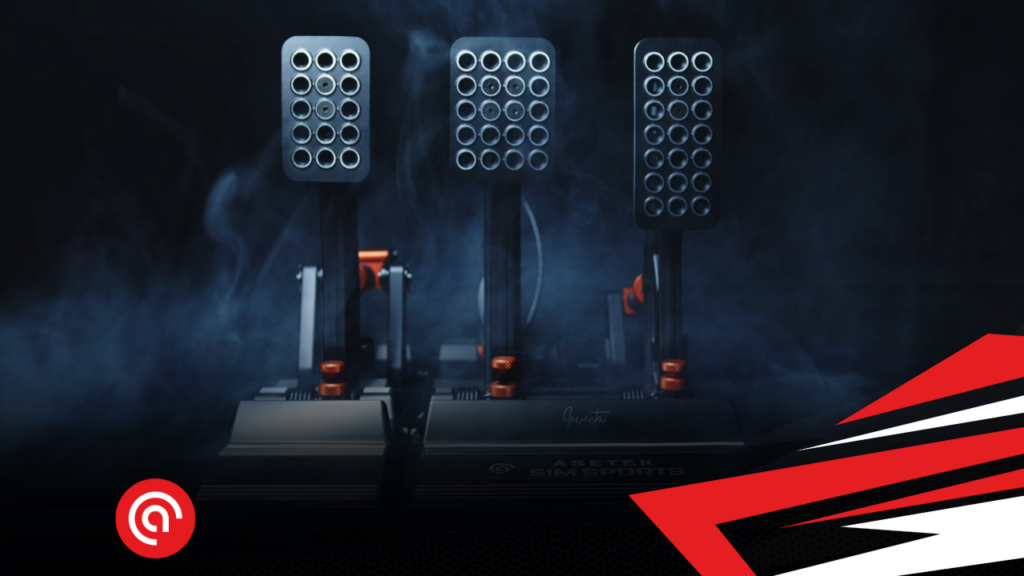
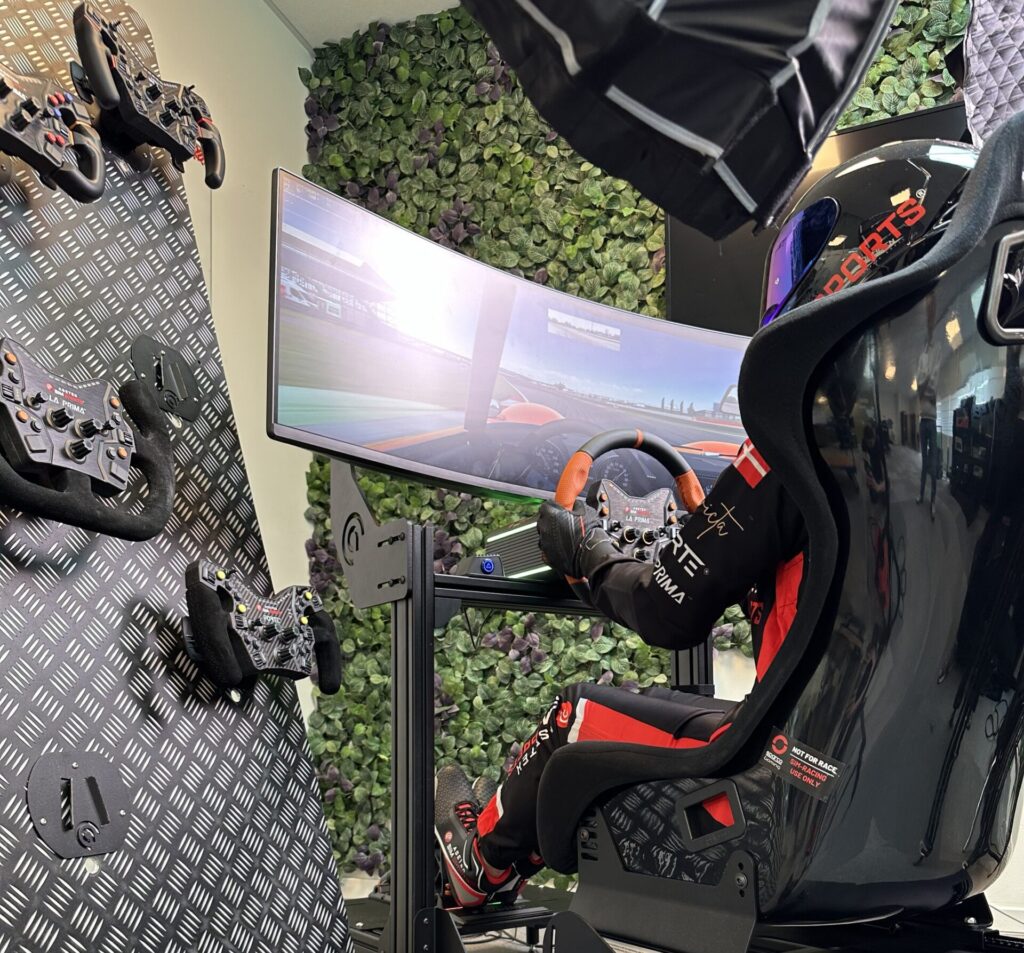
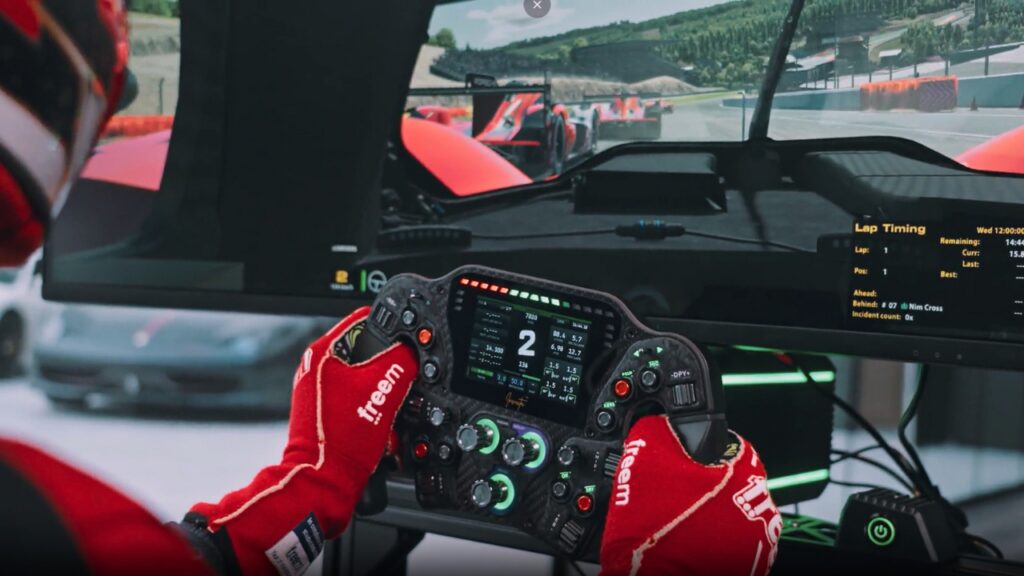
 Back to top
Back to top